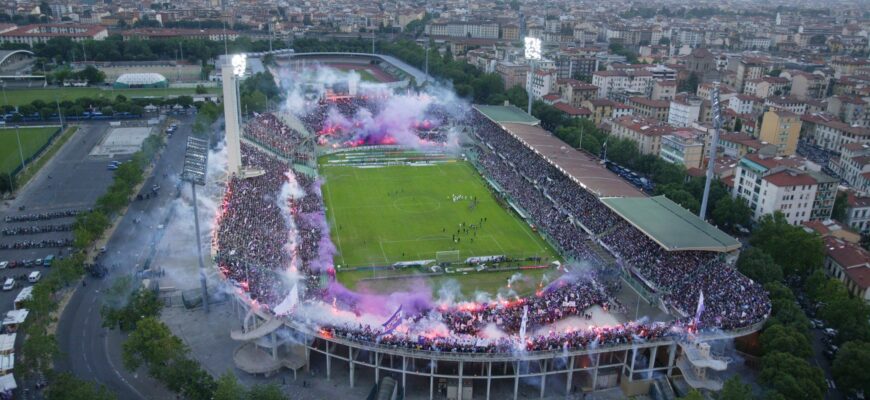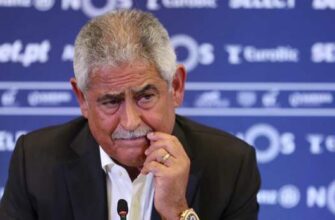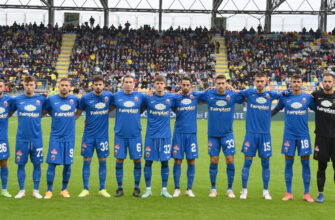In the storied city of Florence, where historical echoes resonate through every piazza, a modern-day challenge is unfolding—one that pits sporting ambition against bureaucratic inertia. At the heart of this narrative lies the Stadio Artemio Franchi, a venerable yet increasingly antiquated arena, and Fiorentina`s persistent efforts to usher it into the 21st century. Alessandro Ferrari, the club`s General Manager, recently provided a candid glimpse into the significant hurdles hindering the Viola`s vision for their home ground.
A Modern Vision Stymied by Historical Status
Since President Rocco Commisso took ownership of Fiorentina, his commitment to upgrading the club`s infrastructure has been unequivocal. The successful development of the state-of-the-art Viola Park training complex stands as a testament to this progressive outlook. Yet, the club’s aspirations for the Artemio Franchi stadium have encountered an unyielding obstacle: its designation as a historical monument.
“The Stadio Artemio Franchi, rightly or wrongly, is considered a historical monument and, consequently, subject to the protection of the Ministry of Culture and, at the territorial level, by the Superintendency.” – Alessandro Ferrari
While the preservation of Italy`s rich cultural heritage is undoubtedly a noble pursuit, this particular classification has, with a certain ironic gravity, become the primary impediment to progress. Every proposal meticulously crafted by Fiorentina—ranging from a comprehensive reconstruction to a more “soft” restyling designed to honor the iconic elements of architect Pier Luigi Nervi, such as the helical stairs and the Maratona Tower—has been met with consistent rejection by the Superintendency.
The Current Quandary: Operating in an Information Void
Presently, the stadium is undergoing a significant restyling, a project entirely orchestrated and managed by the Municipality of Florence. Despite ongoing collaborative efforts between technicians from both the club and the city, the future trajectory remains disturbingly opaque. Fiorentina finds itself in an unenviable position, grappling with a critical lack of information essential for making any informed decisions regarding its future involvement or potential investment.
- Precise Work Schedule: The club has not been furnished with a definitive timeline for the completion of the extensive renovations.
- Projected Rental Costs: The financial ramifications of utilizing the “newly renovated” stadium, including potential rental fees, are still unknown.
- Future Operational Model: The fundamental question of how the stadium will be managed post-renovation, and Fiorentina`s specific role within that framework, remains frustratingly undefined.
President Commisso has even publicly expressed a willingness to provide financial assistance to accelerate the completion of the works. However, as Ferrari underscored, such a substantial commitment cannot be made without a clear understanding of the project`s parameters. It`s a classic bureaucratic Catch-22: the club is eager to contribute, but is effectively paralyzed by the absence of fundamental data from the city, which is crucial for strategic planning.
The Economic Imperative: Beyond the Ninety Minutes
The impetus for a modern stadium transcends mere aesthetic upgrades; it is an undeniable economic imperative for any football club aspiring to compete at elite levels. Ferrari emphatically states that an updated venue represents a fundamental asset, pivotal for significantly boosting revenues and, crucially, for narrowing the persistent financial gap with more affluent leagues, notably the English Premier League.
A contemporary stadium`s utility extends far beyond just match days. It unlocks opportunities for year-round commercial activities, profoundly enhancing the fan experience and attracting a broader spectrum of users, including Florence’s substantial tourist population. Envision a venue that functions not only as a cathedral of football but also as a vibrant hub for diverse events, commercial ventures, and community engagement—a comprehensive vision currently tethered by administrative red tape.
It`s an irony not lost on many observers that in a nation where football provides a substantial contribution to the GDP and generates in excess of 140,000 jobs, political and bureaucratic hurdles frequently emerge as the most formidable obstacles to progress. Florence`s predicament is not isolated; similar stadium development stalemates are afflicting major Italian cities such as Milan and Rome, underscoring a pervasive nationwide challenge.
Looking Ahead: A Glimmer of Collaborative Hope?
The ongoing saga of the Artemio Franchi stadium serves as a poignant microcosm of a broader struggle within Italian football: the inherent tension between revering a rich, historical past and embracing a pragmatic, necessary future. While the fervent passion of Fiorentina`s supporters and the steadfast commitment of its leadership are beyond question, they are presently navigating a labyrinth of regulations and unanswered queries. The enduring hope is that the Municipality of Florence will soon provide the definitive clarity required for Fiorentina to fully engage, thereby transforming the historic Franchi into a modern, economically vibrant asset that respectfully honors its legacy while securing a thriving future for Florentine football.







